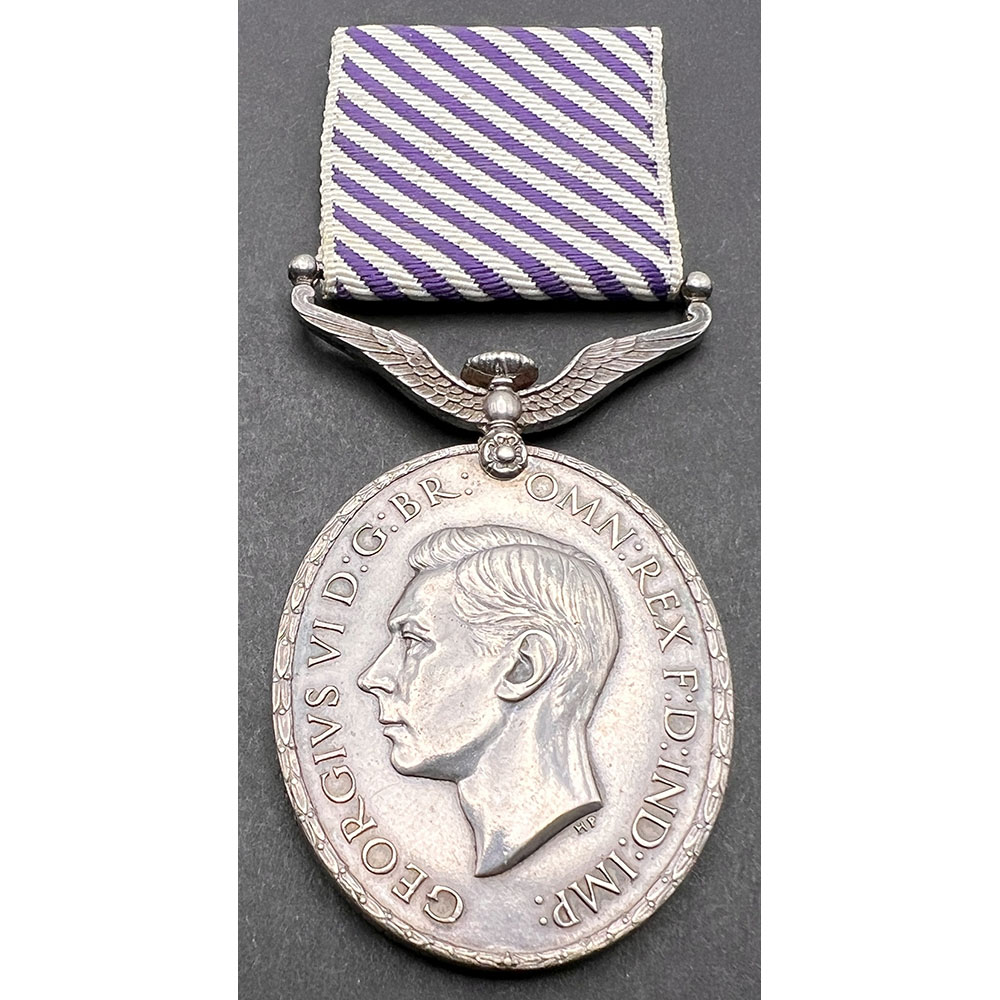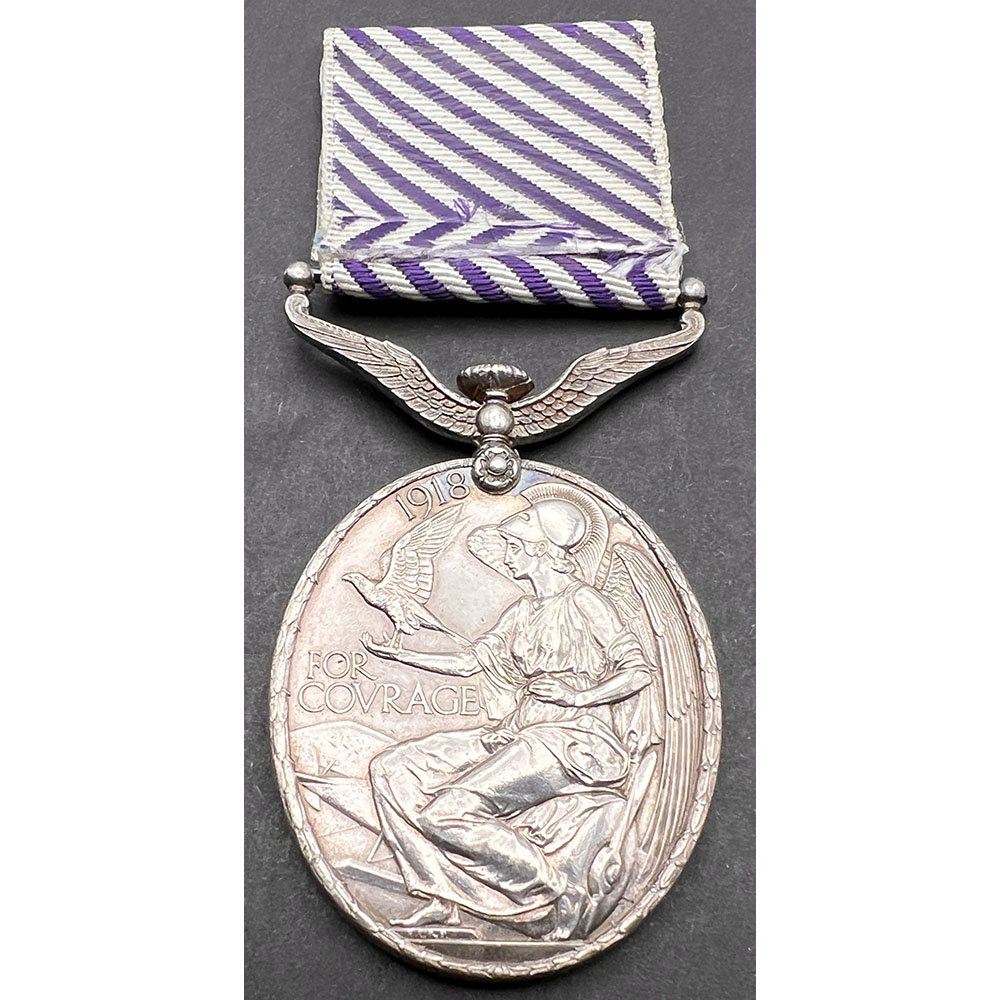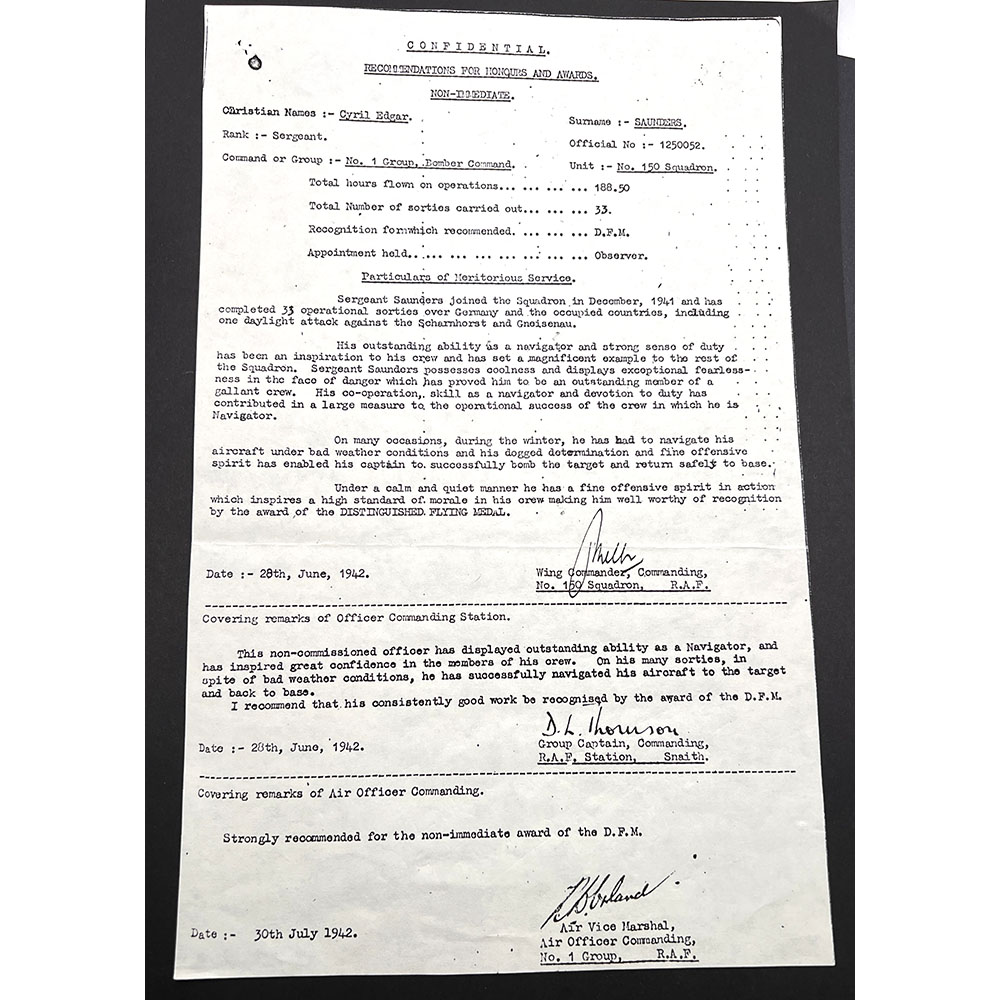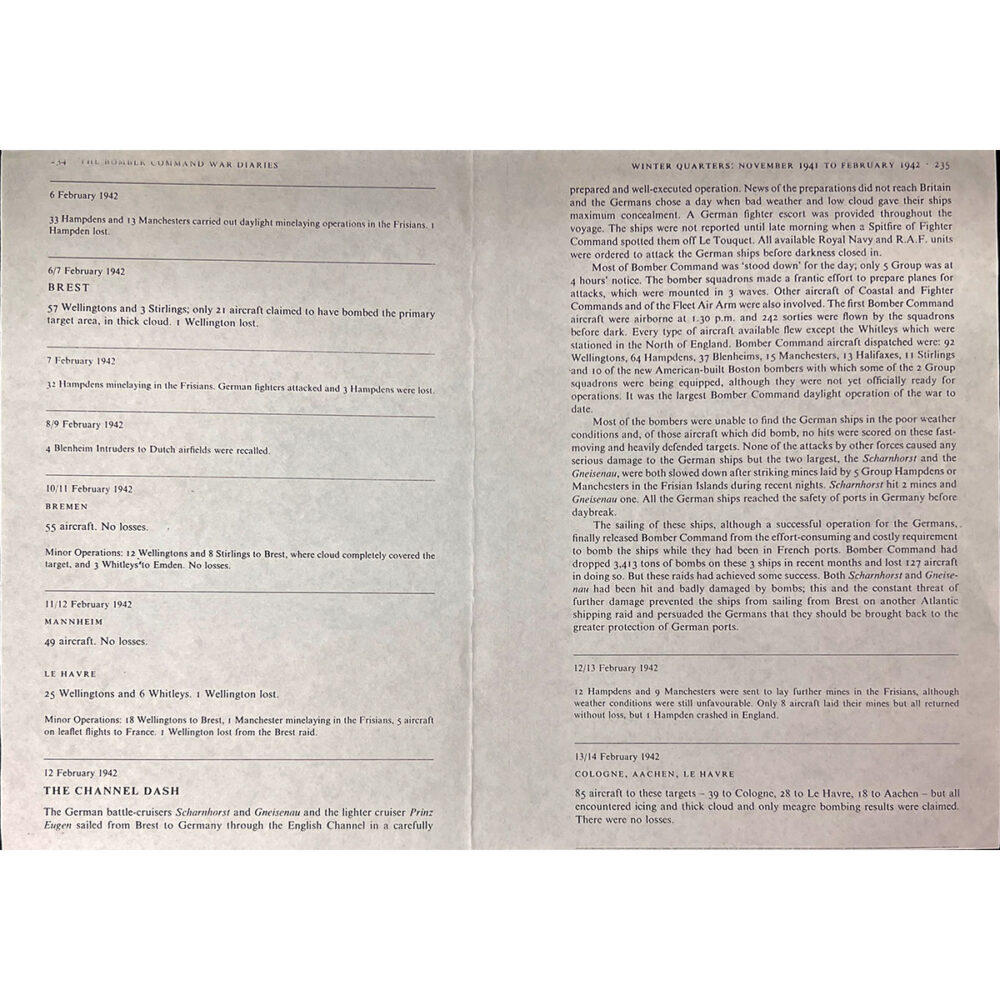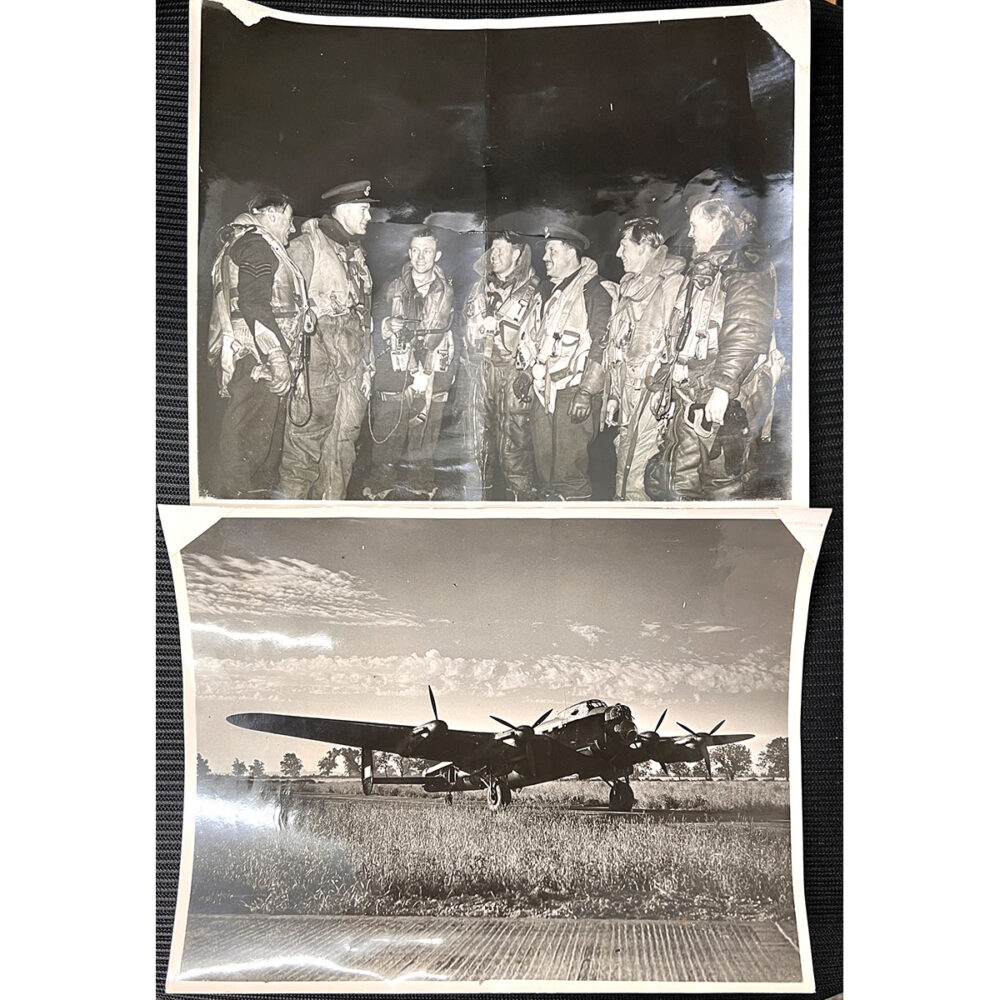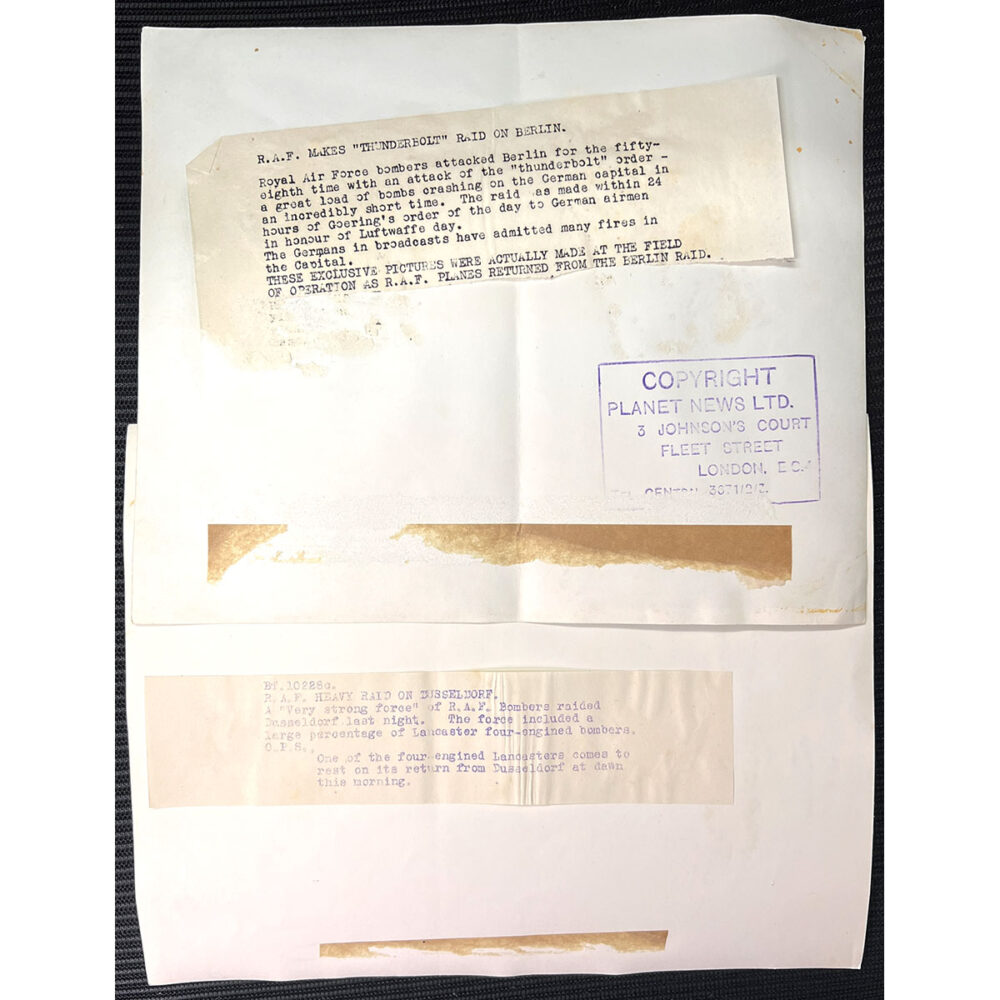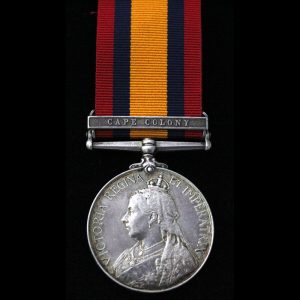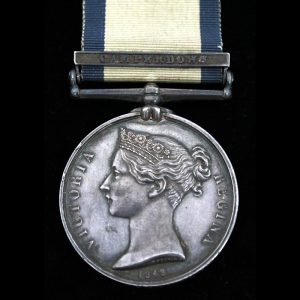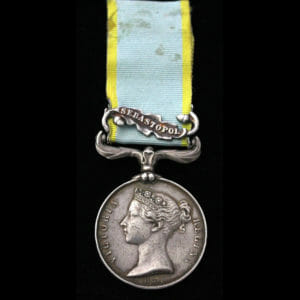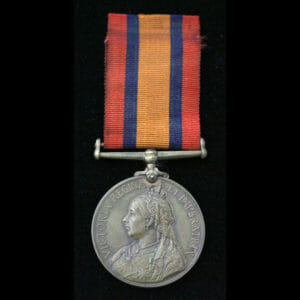Description
Distinguished Flying Medal, GVI, Flight Lieutenant Cyril Edgar Saunders, former Sergeant with 150 Squadron, R.A.F.V.R. Including the daring daylight attack on the Scharnhorst and Gneisenau the Channel Dash.
Officially engraved: “1250052 Sgt C.E. Saunders. R.A.F.”
Awarded the Distinguished Flying Medal, London Gazette, 22nd September 1942 Page 4113.
The short recommendation:
“Since joining the Squadron in December 1941, this observer has completed numerous sorties over enemy occupied territory, he also took part in the daylight attack against the Scharnhorst and Gneisenau.
His strong sense of duty and fearlessness combined with his exceptional ability has set a splendid example.
On many occasions during the winter he has navigated his aircraft in adverse circumstances but his dogged determination and fine fighting spirit has enabled his Captain to successfully complete his mission.
Amongst the successes achieved are successful attacks on the Renault Works, The Matford Works and Gnome – Rhone Factory.
The full recommendation:
Served No 150 Squadron, No 1 Group, Bomber Command.
Total Hours on operations: 118.5
Total Sorties: 33
Recognition: DFM
Appointment held: Observer.
Sergeant Saunders joined the Squadron in December 1941, and has completed 33 Operational Sorties over Germany and the occupied countries, including 1 Daylight attack against the Scharnhorst and Gneisenau.
His outstanding ability as a navigator and strong sense of duty has been an inspiration to his crew and has set a magnificent example to the rest of the Squadron.
Sergeant Saunders possesses coolness and displayed exceptional fearless-ness in the face of danger which has proved to be an outstanding member of a gallant crew.
His co-operation, skill as a navigator and devotion to duty has contributed in a large measure to the operational success of the crew in which he is a Navigator.
On many occasions, during the winter, he has had to navigate his aircraft under bad weather conditions and his dogged determination and fine offensive spirit has enabled his Captain to successfully bomb the target and returned safely to base.
Under a calm and quiet manner he has a fine offensive spirit in action which inspired a high standard of morale in his crew making him well worthy of recognition by the award of the Distinguished Flying Medal.
Dated 28th June 1942, signed Wing Commander, Commanding, No 150 Squadron
Remarks of CO:
This non-commissioned officer has displayed outstanding ability as a Navigator and has inspired great confidence in the members of his crew.
On his many sorties, in spite of bad weather conditions, he has successfully navigated his aircraft to the target and back to base.
I recommend that his consistently good work be recognised by the award of the D.F.M.
Dated 28th June 1942, signed Donald Leslie Thomson, Group Captain, Commanding RAF Snaith. (DSO DFC)
Air Officer Commanding Remarks:
Strongly recommended for the non immediate award of the D.F.M.
Dated 30th July 1942, signed Air Vice Marshal Commanding No 1 Group, RAF”
The local Western Morning News covered his DFM, 23rd September 1942.
“AWARDS FOR GALLANTRY, West Airmen in Latest List, THE OFFICIAL CITATIONS
PLYMOUTH SERGEANT
Sgt Cyril Edgar Saunders who was born in 1917 at Plymouth and still has his home there, also received the D.F.M. He was a wages clerk before he enlisted in 1940, and was trained under the Commonwealth Joint Air Training Plan as Observer.
Since joining No 150 Squadron in December 1941, Sgt Saunders has completed numerous sorties over enemy occupied territory…(Abbreviation of citation follows)”
Cyril Edgar Saunders was born on 3rd May 1917 in Plymouth, Devon.
In 1939, he was living at home on Broadpark Road in Plymouth, with his mother Elsie and family, where he worked as “Wages Clerk, Aircraft Factory”.
His mother Elsie, a Widow was willing to do her part for the war being a part of the Air Raid Precautions Ambulance Service.
Joining the RAF, he served as a Flight Sergeant with No 150 Squadron, RAF.
Starting his first operational Sorties with 150 Sqn on 8th December 1941.
The target being the Airfield of Cormeilles, on the outskirts of Paris, which had been since siezed by the Germans in June 1940, now home to Kampfgeschwader 76, housing a number of Dornier Do17 and Junker 88 Planes.
He saw further operations on Cherbourg, Hamburg and Munster, alongside a Bombing Sorties to the French Port of Brest, on 8th January 1942.
He returned to the Port on 11th February 1942, when he attacked the Scharnhorst and Gneisenau whilst in the dock.
The Operational Records Book describes this attack by ten aircraft of No. 150 Squadron:
“The sun was just setting when our aircraft arrived. The arrival of our party had evidently been anticipated for the smoke generators were discharging great volumes of smoke across the target area. Accurate bombing was carried out from heights between 9,000 and 15,000 feet but results were hard to observe owing to the continual bursting of flak. One aircraft and crew are missing from this operation.”
Commissioned as a Pilot Officer on 24th August 1942, General Duties Branch (Navigators)
Promoted to Flying Officer, February 1943.
At this point he did a second tour of operations starting about February 1943, flying a further 27 Sorties, including 2 Bombing missions over Berlin, 3 over Dusseldorf, raids on Milan, Mulheim, Oberhausen, Leipzig and Bochum.
Promoted to Flight Lieutenant, dated 24th August 1944.
After the war he joined the Royal Auxiliary Air Force on 6th August 1967.
